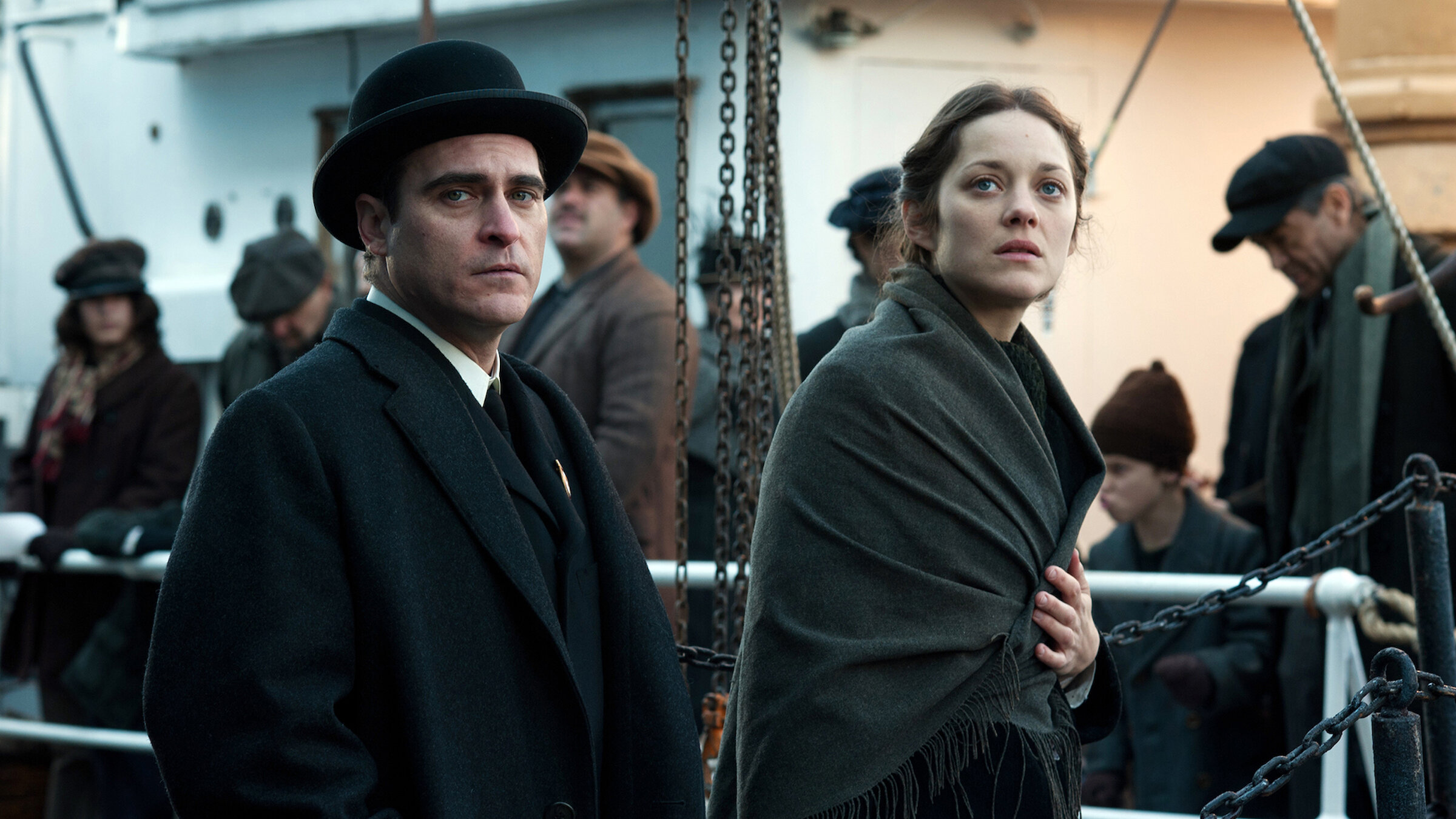is a haunting period drama directed by James Gray that explores themes of hope, desperation, and exploitation in the immigrant experience of early 20th-century America. Set in 1921, the film follows Ewa Cybulska, a Polish Catholic woman portrayed with remarkable subtlety by Marion Cotillard. Ewa arrives at Ellis Island with her sister Magda, only to be separated when Magda is quarantined due to illness. Alone in a foreign land, Ewa quickly discovers that the American dream is not what it seems.
Faced with the threat of deportation, Ewa is taken in by Bruno Weiss, a charming but morally ambiguous man played by Joaquin Phoenix. Bruno offers her food, shelter, and the promise of helping Magda—but at a devastating cost. He introduces Ewa to his world of burlesque and coerces her into prostitution, manipulating her vulnerability under the guise of support. The film does not portray Ewa as a victim without agency, but as a deeply resilient woman forced to make impossible choices in the name of survival and family.
The story takes a turn when Bruno’s cousin, Orlando (played by Jeremy Renner), enters the scene. Orlando is a stage magician who sees something pure and strong in Ewa. His presence offers her a brief reprieve and a glimmer of hope. The dynamic between the three characters becomes increasingly complex, as Ewa finds herself torn between two men—one who exploits her, and one who offers compassion but cannot fully protect her from the world they inhabit.

Performance-wise, The Immigrant is exceptional. Marion Cotillard delivers a quiet but powerful portrayal, mastering both the English and Polish languages and expressing deep emotion through body language and gaze. Joaquin Phoenix’s Bruno is a compelling blend of villain and tragic figure—a man both in love and in conflict with himself. Jeremy Renner brings warmth and a fragile optimism to the film, contrasting sharply with Bruno’s controlling demeanor.
Visually, the film is a work of art. Cinematographer Darius Khondji bathes the screen in warm sepia tones that resemble early photographs, reinforcing the historical authenticity and emotional gravity of the story. The production design vividly recreates the tenements, alleyways, and theater backrooms of 1920s New York. James Gray’s direction is understated and classical, favoring long takes and intimate framing to let the characters and emotions breathe.

More than just a period piece, The Immigrant is a profound reflection on the cost of survival and the price of dreams. It examines the moral compromises that individuals are forced to make when confronted with poverty, isolation, and prejudice. At its core, it is a story about dignity—how one woman clings to her integrity despite immense pressure to give it up.
In the end, The Immigrant is not only about the past; it speaks to universal human struggles—displacement, sacrifice, and the unbreakable bond of family. Quiet, elegant, and deeply emotional, it remains one of the most affecting dramas of the decade.

-1751601651-q80.webp)
